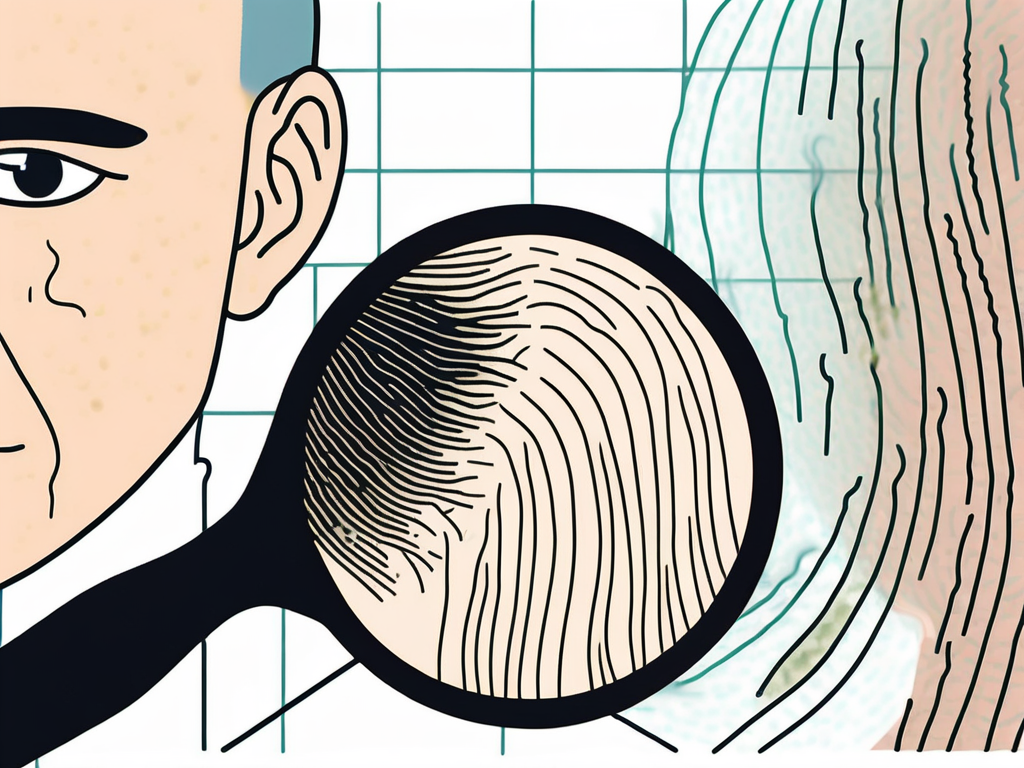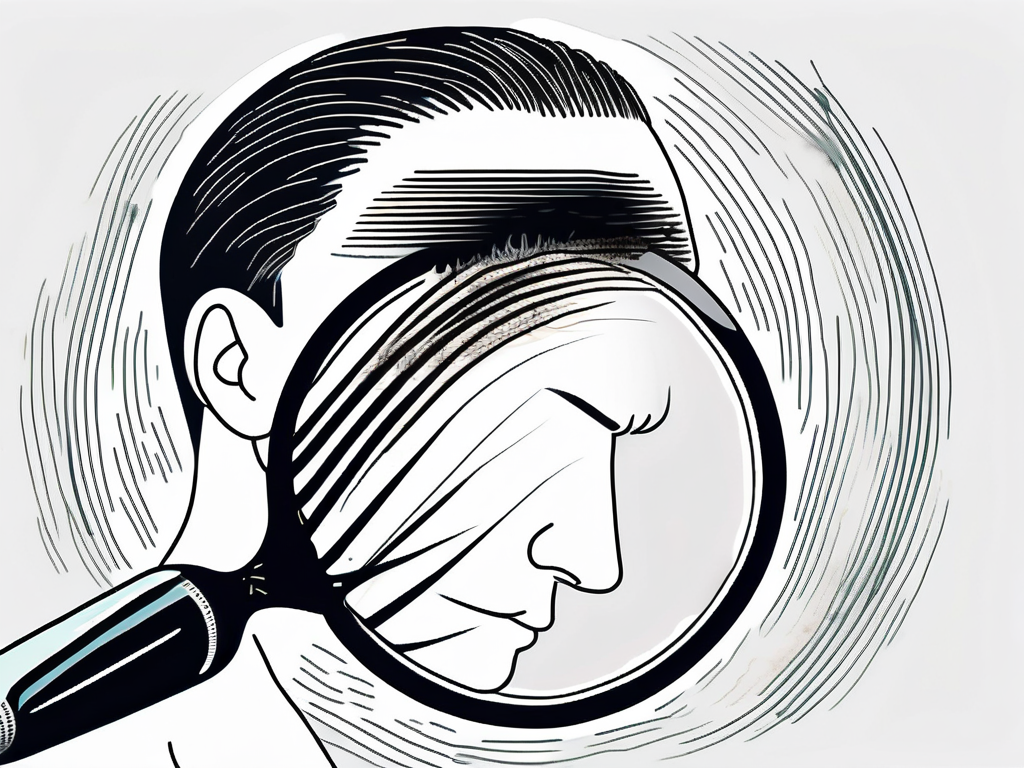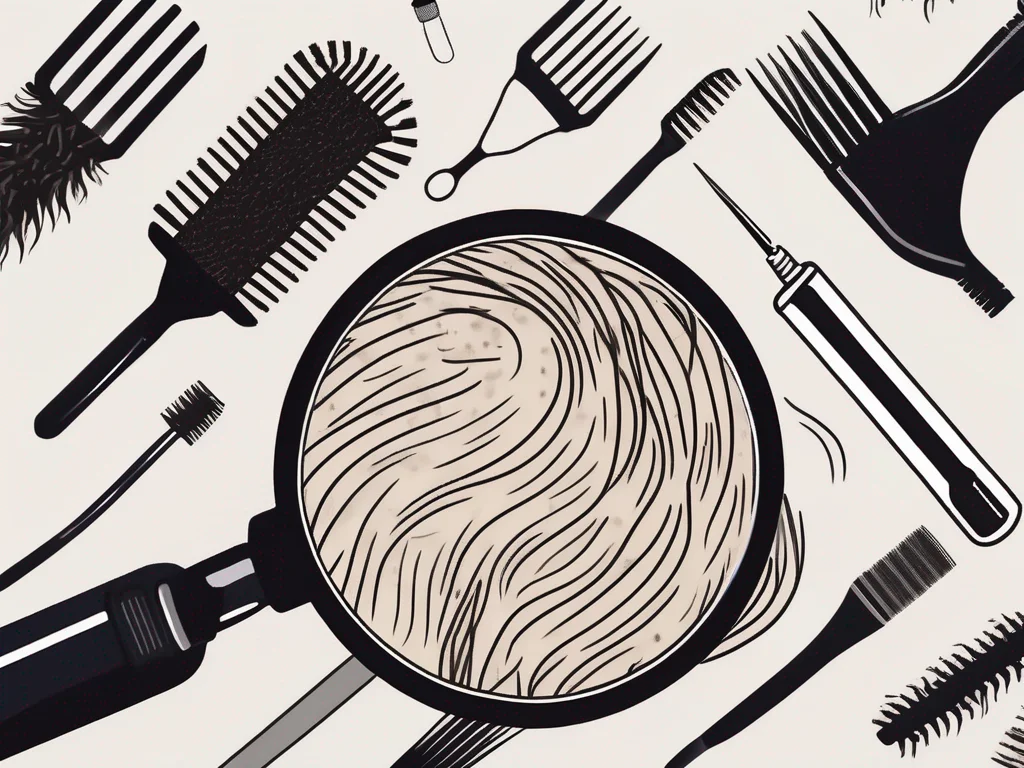Hair transplant surgery is a popular procedure for individuals seeking to restore hair growth. While the surgery has a high success rate, there is a potential risk of infection. Understanding the causes, symptoms, and prevention methods of hair transplant infection is essential for ensuring a safe and successful procedure.
Understanding Hair Transplant Procedures
Before delving into the topic of hair transplant infection, it is important to understand the basics of hair transplant surgery. Hair transplantation involves removing hair follicles from one area of the body, often referred to as the donor site, and transplanting them to another area, known as the recipient site. The success of the surgery relies on the hair follicles’ ability to adapt and regrow in the recipient site.
The Basics of Hair Transplant Surgery
Hair transplant surgery typically starts with anesthesia to ensure the patient’s comfort throughout the procedure. The surgeon then extracts the hair follicles from the donor site, using either follicular unit extraction (FUE) or follicular unit transplantation (FUT) techniques. FUE involves extracting individual hair follicles using micro punches, while FUT involves removing a strip of skin with several hair follicles.
Once the hair follicles are harvested, they are meticulously implanted into the recipient site using a fine needle or microblade. The surgeon strategically places each graft to recreate a natural hairline and achieve optimal results. The entire procedure can take several hours depending on the extent of the transplantation.
Types of Hair Transplant Techniques
There are various types of hair transplant techniques available, each with its own advantages and considerations. FUE, as mentioned earlier, is a minimally invasive technique that leaves minimal scarring. On the other hand, FUT may be preferred when a larger number of grafts are needed.
Other techniques, such as robotic hair transplant and direct hair implantation, have also gained popularity in recent years. These advanced techniques assist surgeons in achieving precise and natural-looking results.
Robotic hair transplant, for example, utilizes state-of-the-art robotic technology to assist surgeons in the extraction and implantation process. The robotic system uses advanced algorithms to identify and select the most suitable hair follicles for transplantation, ensuring a high level of precision and accuracy. This technique has revolutionized the field of hair transplantation, allowing for faster and more efficient procedures.
Direct hair implantation, on the other hand, involves the use of a specialized tool called a Choi pen. This pen allows the surgeon to directly implant the hair follicles into the recipient site without the need for creating incisions beforehand. This technique not only reduces the risk of scarring but also minimizes the trauma to the scalp, resulting in faster healing and recovery times.
It is important to note that the choice of hair transplant technique depends on various factors, including the patient’s individual needs and the surgeon’s expertise. A thorough consultation with a qualified hair transplant specialist is essential to determine the most suitable technique for achieving the desired results.
Causes of Infection After Hair Transplant
Although hair transplant surgeries are generally safe, there are some instances where infections can occur. It is crucial to identify the potential causes to mitigate the risk of infection.

Understanding the specific factors that can lead to post-operative infections is essential for both patients and medical professionals involved in hair transplant procedures. By recognizing and addressing these causes, the overall safety and success rates of hair transplant surgeries can be significantly improved.
Poor Post-Operative Care
One of the primary causes of infection after hair transplant surgery is poor post-operative care. Following the surgeon’s instructions regarding wound care, medication, and hygiene practices are essential. Failure to do so may increase the risk of infection.
Patients must adhere strictly to the post-operative care guidelines provided by their healthcare providers. This includes keeping the surgical site clean and dry, avoiding exposure to potential contaminants, and taking prescribed medications as directed. Any deviation from these instructions could compromise the healing process and leave the patient vulnerable to infections.
Unsterilized Surgical Equipment
Another cause of infection is the use of unsterilized surgical equipment. Proper sterilization of instruments and equipment is crucial to prevent the introduction of bacteria into the surgical site.
Medical facilities performing hair transplant procedures must adhere to strict sterilization protocols to ensure the safety of their patients. This includes thorough cleaning, disinfection, and sterilization of all surgical instruments and equipment used during the procedure. Any lapses in this process can pose a significant risk of infection and other complications for the patient.
Identifying Hair Transplant Infection
Recognizing the signs of infection after a hair transplant is vital for prompt intervention and treatment. While the majority of hair transplant procedures are successful and free of complications, infections can occasionally occur, necessitating swift action to prevent further issues.
It’s important to note that infections following a hair transplant can stem from various sources, including bacteria present on the skin or in the surgical environment. Proper post-operative care and hygiene practices are crucial in reducing the risk of infection and ensuring a smooth recovery process.
Common Symptoms of Infection
Some common symptoms of hair transplant infection include redness, swelling, tenderness, and persistent pain at the recipient site. Pus or discharge, along with foul odor, may also be present. If the patient experiences abnormal discomfort or if the transplanted grafts show signs of inflammation, infection should be suspected.
In some cases, individuals may also develop a fever or experience overall malaise, indicating a systemic response to the infection. Monitoring for these symptoms in addition to local signs of infection is crucial in promptly identifying and addressing the issue.
When to Seek Medical Attention
In cases where infection is suspected, it is crucial to seek immediate medical attention. Delaying treatment can lead to complications and hinder the success of the hair transplant surgery. Healthcare providers may prescribe antibiotics to combat the infection and prevent it from spreading further.
Furthermore, maintaining open communication with the transplant surgeon throughout the recovery process is essential. By promptly reporting any concerning symptoms or changes at the transplant site, individuals can receive timely evaluation and appropriate management, promoting optimal healing outcomes.
Prevention of Hair Transplant Infection
The best approach to combat hair transplant infection is through proper prevention measures.

Ensuring a successful hair transplant surgery involves a comprehensive approach that begins well before the actual procedure takes place. Pre-surgery precautions are essential in setting the stage for a smooth and infection-free process.
Pre-Surgery Precautions
Before undergoing a hair transplant surgery, patients should undergo a comprehensive medical evaluation. Communicating any pre-existing conditions, allergies, or medications to the surgeon is crucial. This information enables the medical team to tailor the procedure and medications to minimize the risk of infection.
Furthermore, it is vital for patients to follow any pre-surgery guidelines provided by the medical team. These guidelines may include specific dietary restrictions, lifestyle changes, or temporary adjustments to medication routines. By adhering to these recommendations, patients can optimize their health and reduce the likelihood of complications during and after the surgery.
Post-Surgery Care and Hygiene
After the surgery, patients must strictly adhere to the post-operative care instructions provided by the surgeon. This includes cleaning the recipient site gently, following a prescribed medication regimen, and avoiding activities that may compromise the healing process. Maintaining good hygiene practices throughout the recovery period significantly reduces the risk of infection.
In addition to following the prescribed care routine, patients should also prioritize their overall health and well-being during the recovery phase. This includes getting adequate rest, staying hydrated, and consuming nutrient-rich foods to support the body’s healing process. By taking a holistic approach to post-surgery care, patients can enhance their recovery experience and minimize the chances of infection or other complications.
Treatment Options for Hair Transplant Infection
If a hair transplant infection does occur, early treatment is crucial to prevent further complications.
One important aspect of treating a hair transplant infection is to identify the specific type of bacteria causing the infection. This allows healthcare providers to tailor the antibiotic therapy to effectively target and eliminate the bacteria responsible for the infection. Cultures may be taken from the infected area to determine the most appropriate course of treatment.
Antibiotic Therapy
For mild to moderate infections, the use of antibiotics may be prescribed to eliminate the infection-causing bacteria. Patients must complete the entire course of antibiotics as prescribed by their healthcare provider to ensure the infection is fully eradicated.
It is essential for patients to be vigilant for any signs of antibiotic resistance during treatment. If the infection does not improve or worsens despite antibiotic therapy, healthcare providers may need to reassess the treatment plan and consider alternative antibiotics to effectively combat the infection.
Surgical Intervention in Severe Cases
In severe cases where the infection has spread or is not responding to antibiotics, surgical intervention may be necessary. This involves draining the infection, removing infected tissue, and possibly revising the hair transplant procedure.
Surgical intervention is typically reserved for cases where the infection poses a significant risk to the patient’s health or if there is extensive tissue damage that requires immediate attention. It is crucial for healthcare providers to closely monitor the patient’s condition before, during, and after surgical intervention to ensure optimal outcomes.
In conclusion, while the risk of infection after hair transplant surgery exists, proper prevention, and prompt treatment can minimize the occurrence and severity of such infections. It is essential for patients to closely follow their surgeon’s instructions and to seek medical attention if any signs of infection arise. By prioritizing hygiene and care, individuals can confidently undergo a hair transplant procedure with minimal risk of infection.





